INTRODUCTION
MATERIALS AND METHODS
Research model
Questionnaire design
Importance of health information reliability: the degree to which consumers' think about the reliability that health information should have.
Barriers to accessing accredited health information: the degree to which consumers' perceive the problems that may arise through the health information accreditation system.
Health consciousness: the degree to which consumers are interested in health promotion and disease prevention by themselves.
Social norm for accredited health information: consumers' awareness regarding whether they think they should use accredited health information is important to others.
Perceived usefulness of accredited health information: the degree to which consumers' believe that they can benefit from using accredited online health information.
Perceived ease of use of accredited health information: the degree to which consumers' believe that they can easily use accredited online health information.
Expectation for the quality of accreditation system: the degree to which consumers' trust the health information accreditation system.
Intention of use of accredited health information: the degree to which consumers want to use accredited internet health information.
Research hypotheses
H1: the importance of reliability will have a positive impact on the expectation for the quality of accreditation system.
H2: the importance of reliability will have a positive impact on the perceived ease of use.
H3: the importance of reliability will have a positive impact on the perceived usefulness.
H4: the importance of reliability will have a positive impact on the intention of use.
H5: barriers will have a negative impact on the perceived ease of use.
H6: health consciousness will have a positive impact on perceived usefulness.
H7: social norm will have a positive impact on perceived usefulness.
H8: the expectation for the quality of accreditation system will have a positive impact on perceived usefulness.
H9: the expectation for the quality of accreditation system will have a positive effect on the intention of use.
H10: perceived ease of use will have a positive impact on the expectation for the quality of accreditation system.
H11: perceived ease of use will have a positive impact on perceived usefulness.
H12: perceived ease of use will have a positive impact on the intention of use.
H13: the perceived usefulness of accredited health information will have a positive impact on the intention of use of the accredited online health information.
Participants
Data analysis
RESULTS
Demographic characteristics
Table 1
The demographic characteristics of the respondents
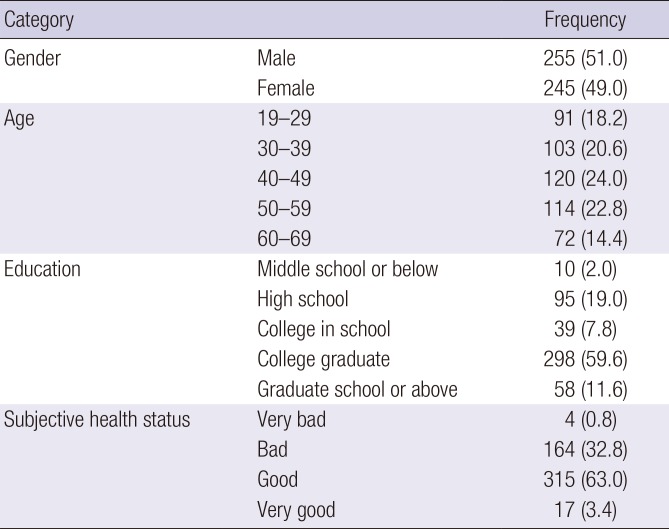
Assessment of measurement tools
Reliability analysis
Validity analysis
Table 2
CFA result
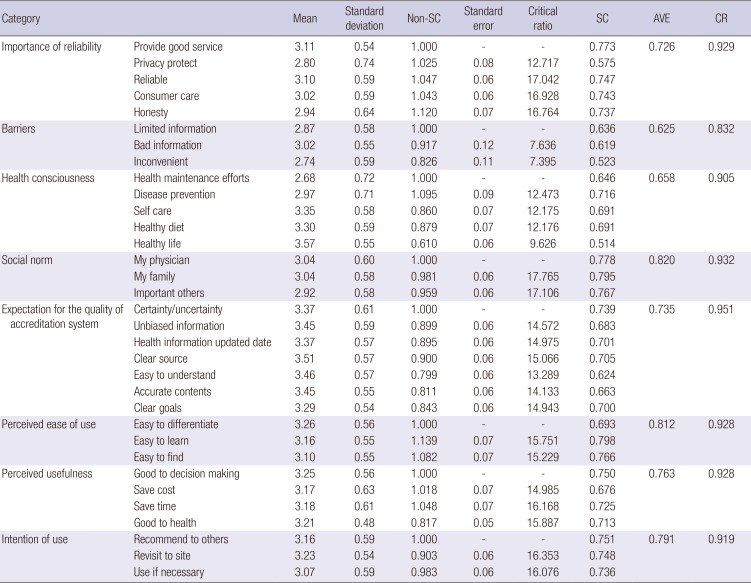
Model's goodness-of-fit
Results of research hypotheses
Fig. 2
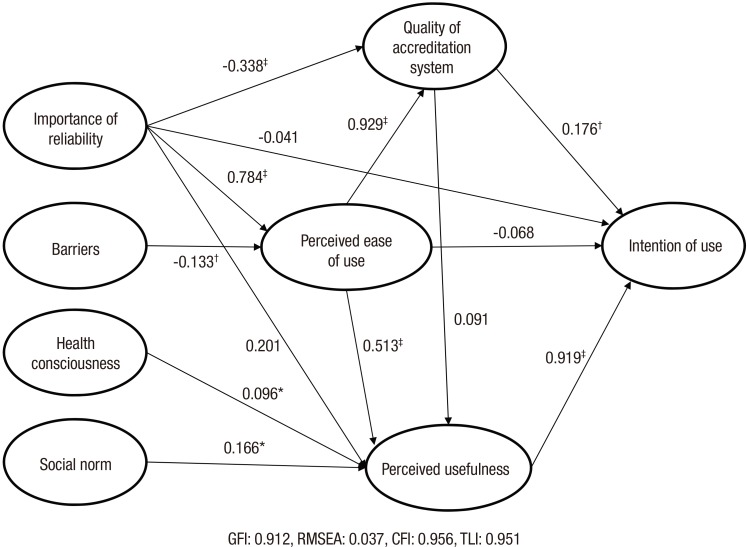




 PDF
PDF ePub
ePub Citation
Citation Print
Print



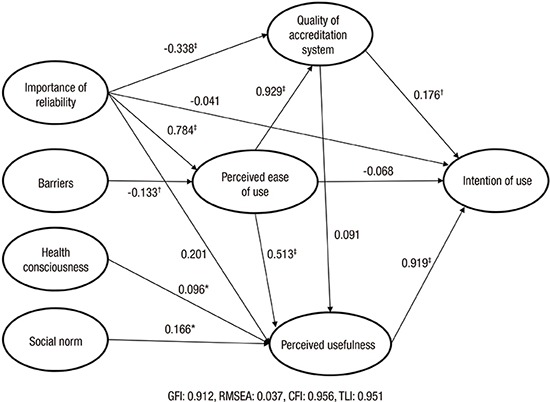
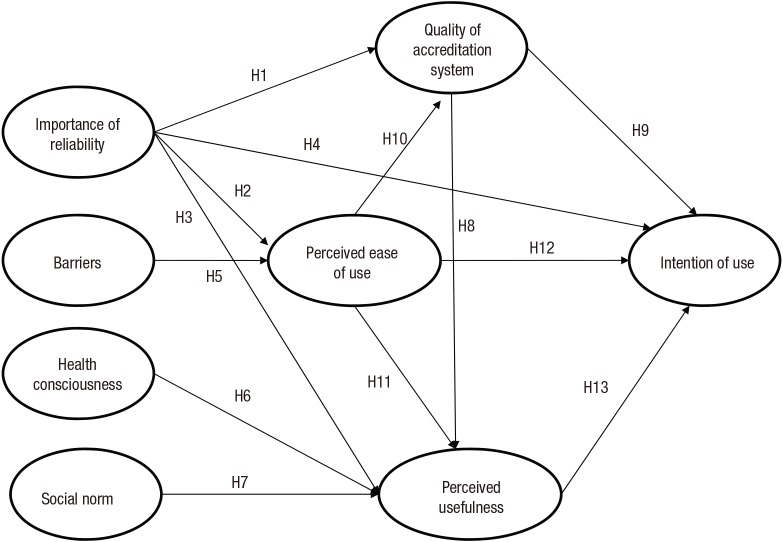

 XML Download
XML Download